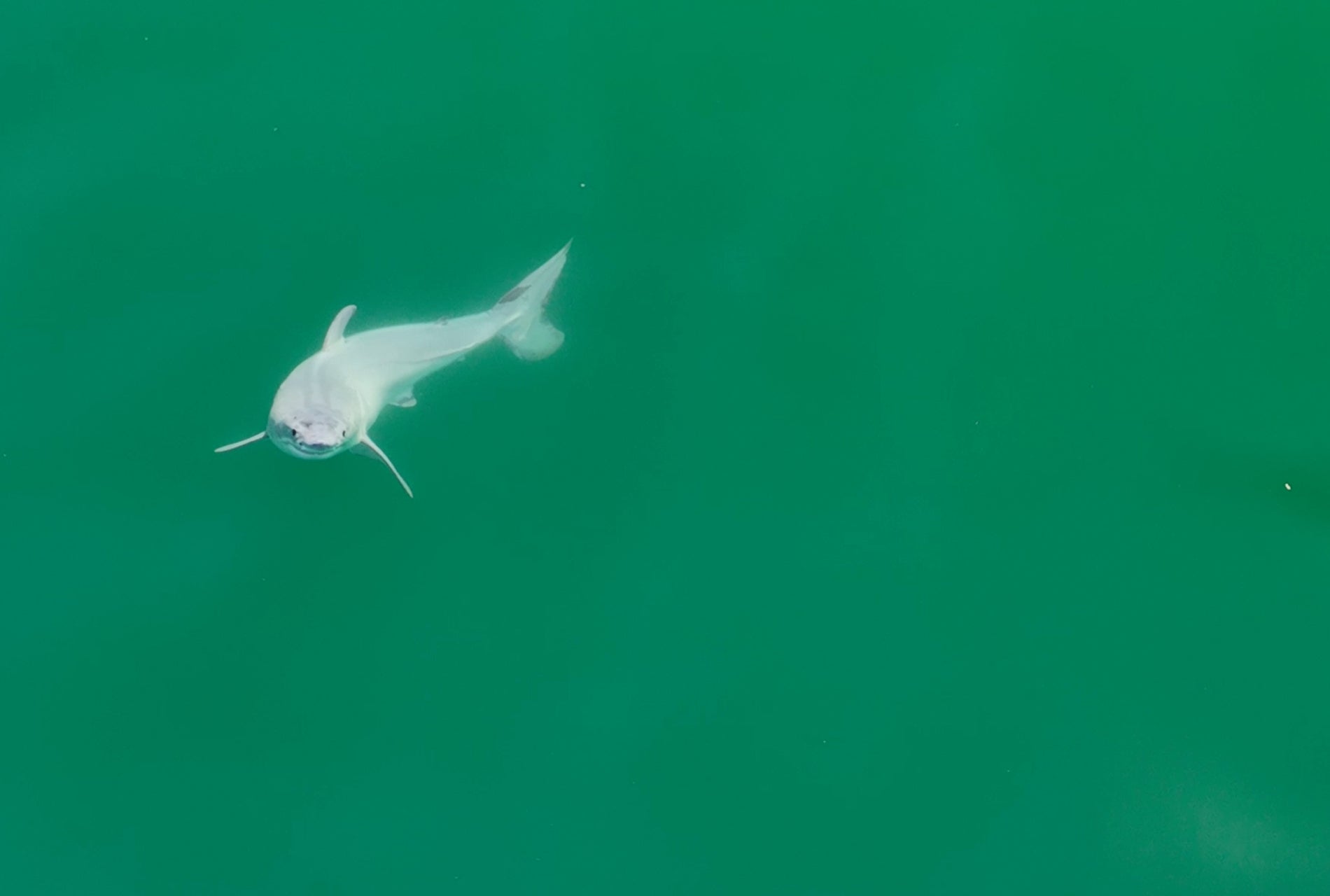A wildlife filmmaker and biology doctoral student have taken what could be the first picture of a newborn great white shark. The images and findings are described in a study published January 29 in the journal Environmental Biology of Fishes.
[Related: Sharks have a sixth sense for navigating the seas.]
Most famous for terrorizing beachgoers in the greatly exaggerated Jaws movies, great whites are the largest predatory sharks in the world. Despite their apex predator status, fatal attacks on humans are rare. According to the Florida Museum of Natural History, humans are more than 75 times more likely to be killed by lightning than a shark. They can weigh between 1,500 and 4,000 pounds and their newborns typically feed on fish and other sharks. Even though they are fish, many sharks give birth instead of laying eggs.
On July 9, 2023, filmmaker Carlos Gauna and University of California, Riverside biology doctoral student Phillip Sternes were looking for sharks near Santa Barbara on California’s central coast. Most great whites are gray on top with white bellies, but Gauana’s drone camera showed a roughly 5-foot-long shark pup that had more white on its body than normal.

“We enlarged the images, put them in slow motion, and realized the white layer was being shed from the body as it was swimming,” Sternes said in a statement. “I believe it was a newborn white shark shedding its embryonic layer.”
Gauna has spent thousands of hours filming sharks all over the world and this recent observation could help solve the longstanding mystery of great white birthing habits.
“Where white sharks give birth is one of the holy grails of shark science. No one has ever been able to pinpoint where they are born, nor has anyone seen a newborn baby shark alive,” Gauna said in a statement. “There have been dead white sharks found inside deceased pregnant mothers. But nothing like this.”
While the shark may have been shedding some skin due to an unknown dermatological condition or have albinism, Gauna and Sternes do not believe that either explains the pup’s more white color. They are both co-authors of the study and believe that the shark in their footage is a newborn great white for four primary reasons.
Intrauterine milk
While great white shark pups are in utero, the embryonic sharks may eat unfertilized eggs for protein. The mothers also potentially give a milk-like substance that is secreted in the uterus as additional nourishment to the growing shark pups.
“I believe what we saw was the baby shedding the intrauterine milk,” Sternes said.
Pregnant sharks nearby
In the weeks leading up to the observations, Guana had seen large and likely pregnant great whites swimming in the vicinity.
[Related: With new tags, researchers can track sharks into the inky depths of the ocean’s Twilight Zone.]
“I filmed three very large sharks that appeared pregnant at this specific location in the days prior. On this day, one of them dove down, and not long afterwards, this fully white shark appears,” Gauna said. “It’s not a stretch to deduce where the baby came from.”
Size and shape
The team believes that the shark’s appearance is also indicative of a newborn and not a juvenile shark. They observed a shark that was thin, shot, and rounded instead of a longer older shark. The study posits that the shark is potentially only hours to one day old at most.
Location, location, location
Scientists believe that the location off the coast of central California where the pup was observed is a potential birthing ground for great whites.
“There are a lot of hypothetical areas, but despite intense interest in these sharks, no one’s seen a birth or a newborn pup in the wild,” Sternes said. “This may well be the first evidence we have of a pup in the wild, making this a definitive birthing location.”
However, other scientists believe that great whites are born further out to sea. This pup was spotted about 1,000 feet from the beach, so it was likely born in more shallow waters. More research is needed to confirm if this area of California’s coast is a breeding ground.





